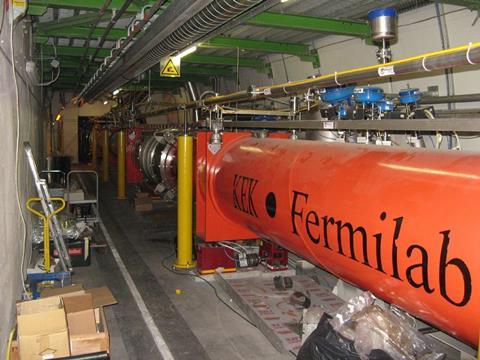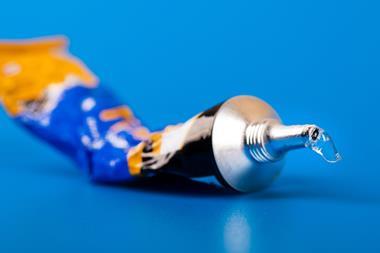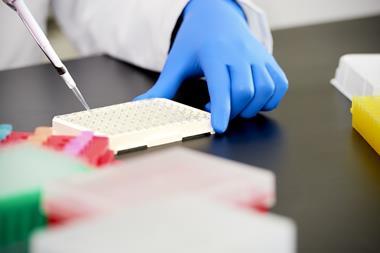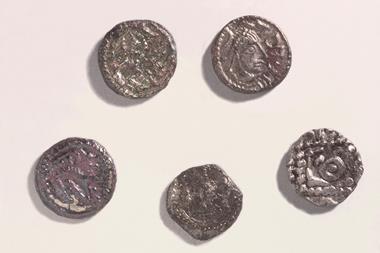Ben Valsler
This week, we join Brian Clegg with a compound that has a firm hold on his childhood memories.
Brian Clegg

The French novelist Marcel Proust has a lot to answer for. Specifically, in his interminable multi-volume novel À la Recherche du Temps Perdu, he established the idea that smells and tastes are particularly good for conjuring up past events in the memory. Proust famously describes the memories set off by tasting a madeleine dipped in tea. While there is limited scientific evidence to give smells and taste more weight than other senses, one smell for me certainly does take me back to a particular point in time. It’s the distinctive odour of epoxy resin, which transports me back some decades to watching my father build a model boat with a fibreglass hull.

We encounter epoxies both as the sticky fluid that reacts to give fibreglass its rigidity and in the impressively strong bonding of epoxy adhesives. Organic compounds containing an oxygen atom linked to two carbon atoms are known as epoxides, and a substance made with them is epoxy – hence epoxy resin and epoxy adhesive. The distinction between the two is arbitrary, though the adhesives tend have better bonding to a wider range of other materials.
Most commonly the resins are set using a second compound known as a hardener in the curing process. Before use, the hardener is mixed into the resin, which is then put in place before it cures. During the exothermic reaction that follows, typically the hardener breaks the epoxide groups and links together several molecules to produce a polymer with a three-dimensional structure that gives the resultant material strength. There are a wide range of epoxy resins and glues available, but all work in broadly the same fashion.

Some resins can, with a suitable catalyst or just the application of heat, react with themselves. Such epoxies tend to produce particularly high-strength outcomes and are typically used in industrial settings. The variety of hardeners available is broad, ranging from simple carbon/nitrogen amine compounds to the organo-sulfur compounds thiols (traditionally known as mercaptans). These tend to be the most powerful of the hardeners, requiring no heating and reacting quickly. This makes them ideal for quick-setting epoxy glues, where the thiol’s distinctive garlic-like smell can be detected.

Although we tend to think of epoxy resins and glues in structural roles, they also have proved invaluable in electronics as most epoxies are excellent insulators, so electronic circuits can be encased in an epoxy resin which is then cured to provide a protective casing.
It’s hard to find an area of modern life where epoxy resins don’t play their part. As well as encasing electronics, they form the base of printed circuit boards. They even find their way into the high-tech world of the superconducting magnets used everywhere from hospital MRI scanners to the Large Hadron Collider at CERN, where specialist epoxy resins are used to insulate the magnetic coils. Their role is crucial when the magnets go from superconducting to normal conduction in an uncontrolled fashion. When this process, known as a quench, occurs a lot of heat is released (this is why the Large Hadron Collider was put out of action shortly after it was commissioned). Epoxy impregnation of the windings speed up the propagation of normal conduction, distributing the heat and minimising the chances of hotspots causing damage.

More sophisticated composites (combining fibres and resin) are used in the production of wind turbine blades. And though epoxies aren’t the only resins that can be used, they also turn up frequently as the matrix for the carbon fibre materials that are now common wherever light and strong construction is required. Epoxy paints are used on white goods and elsewhere, where good attachment to metals is required. And though they tend not be used on the exterior of boats as they can be damaged by ultraviolet, epoxies are often found under the exterior paint, just as they often are on cars and in the aerospace industry, where the combination of strength and lightness is particularly attractive.
There’s something rather special about using epoxy adhesive: squeezing out blobs of resin and hardener and mixing them together to start the hardening process. Epoxies remind us, after all, that we never far from a chemical reaction.
Ben Valsler
That was Brian Clegg with epoxy adhesives. Next time, Kat Arney brings tears to your eyes.
Kat Arney
Grab a knife and slice into an onion, and you’ll quickly feel a stinging sensation and tears starting to flow. You’re suffering from the effects of a chemical known as ‘lachrymatory factor’, or propanethial-S-oxide – an airborne sulfur-containing organic chemical that is similar to tear gas.
Ben Valsler
Join Kat next week to discover the compounds that make chopping onions into an ordeal. Until then, get in touch by email – chemistryworld@rsc.org or tweet @chemistryworld. I’m Ben Valsler, thanks for listening.













No comments yet